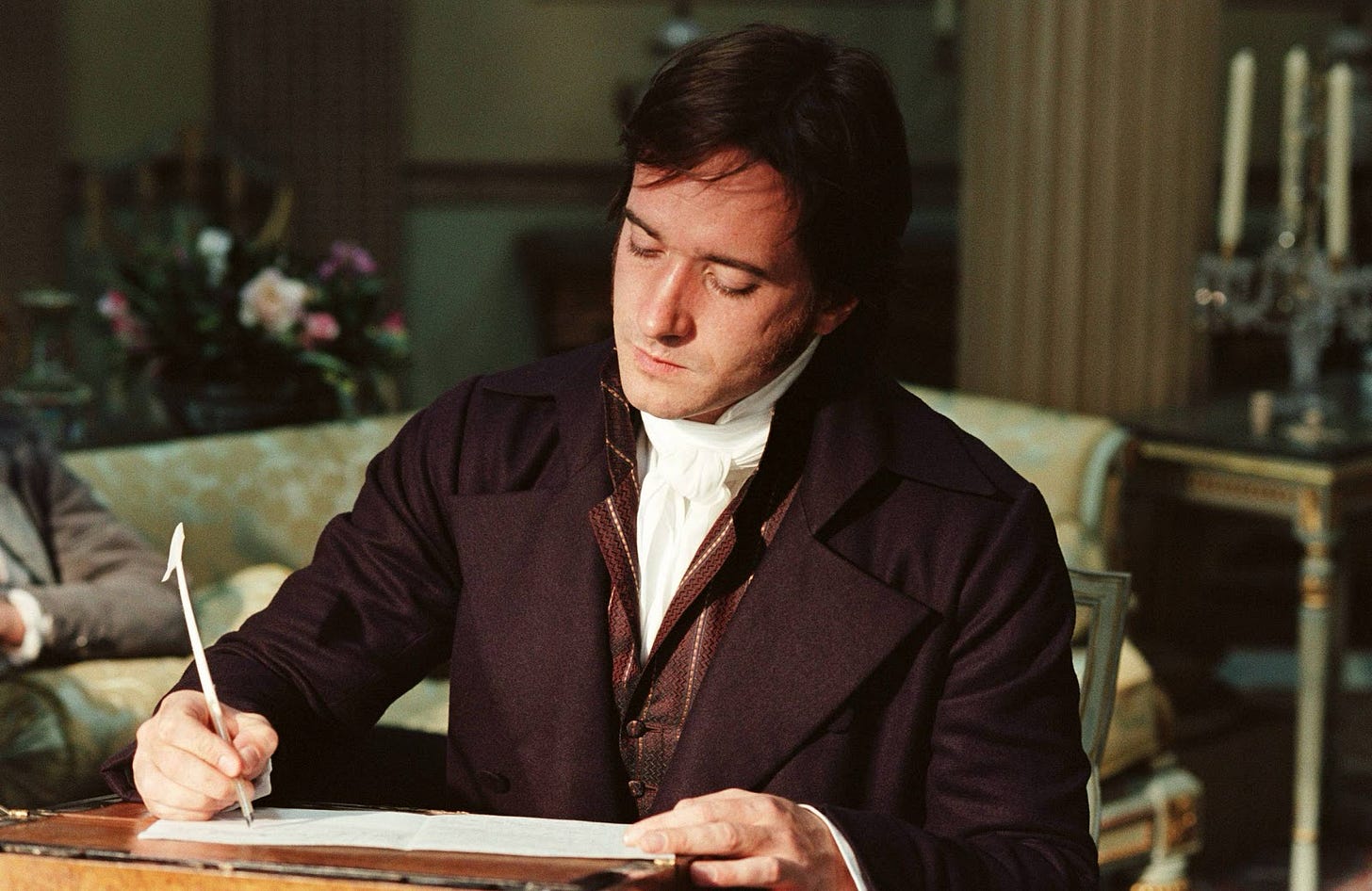It’s a meta thing — writing about how to write. Almost as meta as neuroscientists using their brains to study the brain. But I digress. When it comes to writing, I’ve been asked different flavors of the question: How do you do it?
At first, I didn’t have a great answer because I did not really know, either. Despite having kept a journal since I was in middle school, I never thought of writing as a formal process. I just did it.
Of course, writing an article to publish online requires a different approach than writing stream-of-consciousness thoughts in a journal. So, after traversing along the peaks and valleys of writing on a semi-consistent basis in the past year with an increased awareness of my writing habits, I have developed a process that I can articulate. Arriving at this process has been a journey in and of itself. And, while I am certain that my formula will continue to evolve, I hope that by sharing, it will inspire some of you to write more in this upcoming year!
1. Decide what to write about
Writing starts before you sit down to write; it starts with the question, what do you want to write about?
Here is where being a keen observer of life is essential. Remaining curious and open will allow you to make cheeky connections between seemingly disparate ideas or situations. It’s those unexpected connections that make for the most delightful pieces.
An example of this is from a podcast I listened to a couple years ago, featuring best-selling authors Mark Manson, author of The Subtle Art of Not Giving a F*ck and James Clear, author of Atomic Habits.
When asked about how he gets writing ideas, Mark shares that his “idea generation is pretty much directly proportional to how much [he’s] reading … good, interesting books,” and if he’s not doing his homework, then the ideas stop flowing.
This requires consuming content that is in a field that is not his own, which is self-help and productivity. He explains that “… to get something really original and interesting … [he needs] to read economics or history or science,” and that “if [he’s] not reading that finance book, then that never happens.” The cross-disciplinary learning helps you make novel connections, which in turn make for more interesting writing perspectives.
In addition, on the Modern Wisdom podcast, Chris Williamson and stand-up comedian Sam Morril discuss how once comics reach a certain level of success, their entire lives revolve around airports and backstages. But despite this, it’s still important for comics to have “real stories,” as Morril notes, because it’s the random, unexpected circumstances in life that make for funny anecdotes. Similarly, when it comes to writing, having authentic experiences to draw from makes for juicer, more nutrient-dense pieces.
All of this said, as you’re living life, it helps to jot down some notes to jog your memory later. I am a Notes app power user and now use the voice memo and AI summary feature to annotate ideas. As your notes multiply, you’ll have a vault of material to draw from and write about.
2. Actually start
Now that you know what you’re going to write about, it’s time to begin putting pen to paper. Starting is arguably the most challenging part. It’s like how pushing a stationary car is harder than pushing a moving car. There’s no momentum to leverage.
That’s why I remind myself of the most important point: the first draft is to make it exist. Nothing more. It could be the worst thing ever written, but the point is to make it exist. It must go from a figment of your imagination to words on paper. Keeping this in mind lowers the pressure to just start.
The first draft is to make the idea exist.
I like starting with a physical pen and notebook. None of that digital nonsense. The reason is because then I feel like I have a true first draft, not some never-ending document filled with letters that I keep pressing backspace on.
Another benefit of having a physical draft is that you are less likely to get distracted. I used to use Google docs but then somehow I’d start responding to emails, click on an athleisure ad, and wind up 30 minutes later in a Wikipedia rabbit hole about Como agua para chocolate and the Mexican Revolution. And with only maybe 3 sentences to show for it.
Instead, the pen and paper leave you alone with your thoughts. There’s no need to worry about spelling, grammar, logic, paragraph order or eloquence — all of that can be addressed later. Just get your thoughts on paper. I’d recommend beginning without any notes and seeing what comes to mind organically. Those are often the most salient points of the piece.
And, again, I cannot emphasize this enough — the standard for this stage of writing is to make the piece exist. Is it on the paper? If yes, then that’s a success.
3. Supplement with notes
When you’ve gotten your organic thoughts out, you can bring out any notes you’ve recorded to supplement the existing draft. Like a v1.5 of sorts.
This is when you’ll be happy you took good notes; if you annotated things in enough detail, you’ll be able to fill in the blanks more easily.
4. Digitize (with caution)
After v1.5, you can move into the digital realm. But be careful — online is a treacherous place full of distractions. It’s like dementors feeding on your attention. See: athleisure ads. Take a deep breath and remember your ultimate objective: to finish writing the piece.
Start transcribing the handwritten piece directly into the platform you’ll be publishing with, if you’re publishing. If you’re not publishing and still want to digitize, you can transfer it into a doc. Sure, we have the technology to automate this process, but I prefer to type it up manually (as I am doing now), because this process gives me a chance to read the piece through. And, inevitably, while I do, there’s edits and tweaks I make along the way, although I try to not get bogged down on one section and keep the edits light. At this point, the draft may still be rough, so the primary objective is to just move it into a digital format.
You may be wondering why I transfer the piece directly into the publication editing place, instead of a doc. It’s because I have learned that I have a lot of resistance towards publishing things. I have so many pieces that have yet to see the light of day because they’re all still in docs. So, to reduce the publication friction, I just type directly in the editor. That way, when it’s done, it reduces the cognitive load of making the decision to copy and paste from a doc into the editor and wondering if it’s really ready or does it need more editing? (Yes, it’s ready.)
5. Edit, edit, edit
Now comes the fun part — editing. Fun is subjective, and may also involve pain, ok?
In the words of fiction writer James Michener, “I’m not a very good writer, but I’m an excellent rewriter.”
“I’m not a very good writer, but I’m an excellent rewriter.” - James Michener
Much of writing is rewriting or editing. Now is when you address both the big- and small-ticket items, like grammar, spelling, conciseness and more. While reading through the piece, some questions I ask are:
Does the logic flow through the entire article?
Is there another piece of evidence I could include to strengthen the point?
Would another word make the sentence read clearer?
Do I say what I mean and mean what I say?
This is where reading other works helps — you learn different sentence structures and techniques for explaining concepts that you can apply in your own writing.
I would be remiss if I did not mention the tower-falling moment I often experience during this step, in which I question the entire piece, wondering if any of it makes any sense at all, if this is worth saying, am I saying it right? Does anyone even care about this and am I a terrible writer??
The good news is that all of this is a normal part of the writing process, but that doesn’t make it any easier to deal with. The only way out is through. You can either take a break or keep moving, in spite of the doubt. Eventually, it dissipates.
Then, you continue to edit until you can’t or don’t want to edit anymore.
6. Convince yourself that the piece is done, and press publish :)
Make sure you actually press it, though. Now go forth and write!
“People who live out their destiny and fulfill it to the best of their knowledge and abilities have no reason for regret.” - Carl Jung
If you enjoyed reading this piece and want to support the newsletter, you can buy me a coffee here <3






I loved your article, and I am feeling inspired to keep writing! I love how you captured this idea of serendipity where unrelated ideas and unexpected discoveries come together to form a bigger insight.